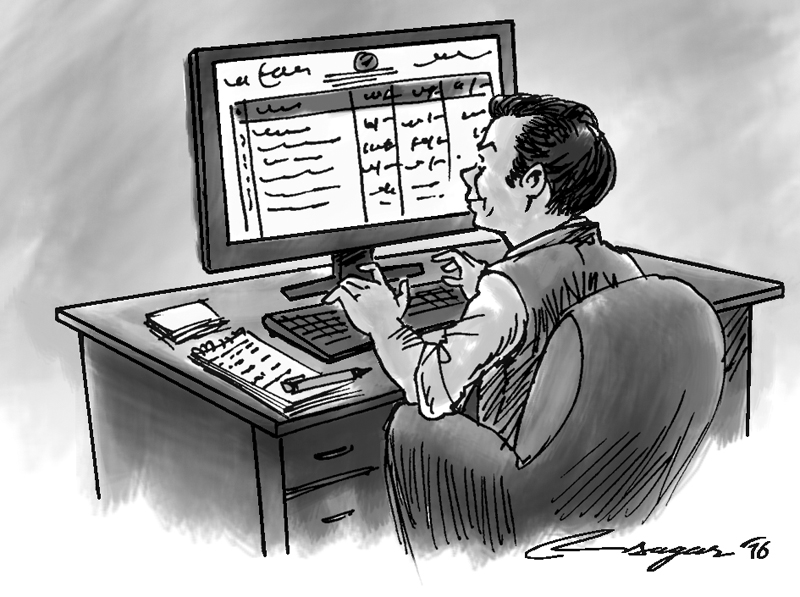Settling scores: Online harassment
Harassment of women online is at risk of becoming an established norm in our digital society. What starts off as a harmless intellectual debate soon develops into a string of personal attacks eventually turning obnoxious
Do you recall that time in school when a certain someone made your life miserable on a daily basis?
A slap on the back of your head? Getting tripped while walking alone in the school corridors? Forced to give up your lunchbox? Do your memories also bring along waves of fear, humiliation and anger simultaneously? Right, nobody likes a bully!
Now, let us add ‘technology’ to this dynamic and look at bullying from a wider angle. An old age civilization that bullying remains, having ‘technology’ in the mix means that it is no longer limited to schoolyards or street corners.
A new form of bullying has come over time with the easy accessibility of cell phones and computers. Cyber bullying, cyber stalking and cell phones have rapidly become more subtle and prevailing forms of harassment in the cyberspace.
From spreading malicious rumors, sending anonymous threats to engineering embarrassing doctored photographs with the intent to cause ‘harm’, it can occur anywhere via email, texts, cell phones, and social media websites, and anytime with potentially hundreds and thousands of people involved.
Recently, I was an observer at a round-table discussion with the motive of comprehending this pivotal issue from a both experiential and legal context. Since the beginning, I couldn’t help notice a recurring theme i.e. shield of ‘anonymity’- a trait that has a way of bringing out harsh, judgmental streak in strangers who would never belittle another in person.
Similarly, the magnitude of trolling and intent of a said bully are among a few indicators to interpret the level of cyber bullying that appears in various forms; namely, harassment, flaming, exclusion, outing or masquerading.
But, there are laws? Yes. To what extent? To everyone’s dismay, the legal side is in a constant struggle to expand its space towards the lawful protection of its victims.
Lack of demarcation between freedom of expression and cyber-bullying, has set up a loophole, which in turn, bars the victims from thoroughly exercising their legal provisions.
Another major flaw also lies not in the outlining of fundamental rights as perceived by outsiders but rather in procedural mechanism, specifically in determining the gravity of offense followed by punishments.
last month, the social media witnessed a malicious personal attack on a well-known public figure.
Her controversial opinion on a TV show had set in motion a flurry of activities in social media with many attempting to defame her which can be seen as a recurrent pattern amongst the majority of the public profiles.
But, the bigger question lies in asking ourselves whether there is a bigger divide between cyber bullying aimed at men and remaining sexes?
On a gender-wise perspective, the patterns are hard to ignore. Especially in the mainstream media, journalists have been bearing the brunt of numerous backlashes for voicing their opinions on issues like gender quality and social inclusion.
Though the intensity of a political discourse remains the same, but the level of harassment that women are subjected to is too harsh. Harassment of women online is at risk of becoming an established norm in our digital society.
What starts off as a harmless intellectual debate soon develops into a string of personal attacks eventually turning obnoxious.
Additionally, in the LGBTI community, the harassment has more to do with one’s gender role in the society, for being perceived as ‘divergent’, and therefore justifies the persecutor’s need for dominance in his/her eyes.
What is rather poignant about this realization is the seeds of bigotry and misogyny, so reflective in our cyber domain, have been long sprouting within our own social structures. Pranika Koyu, Chaukhat (founding member) shares, “In our social structure, an unaccepted belief is seen as a threat, just like a caterpillar.
And what happens when we notice a caterpillar? We chuck it away. We get rid of it, by all means.”
Are our online lives always going to be shadowed by the presence of these “ego-centric” social fringes? No, not all online spats end up getting blown out of proportion.
A straightforward message asking to take down a mudslinging comment or dropping a warning or two about cyber laws always comes in handy. Suggestions of ‘online stints’ for crackdown of bullies by the police force has been in demand.
Even so, the situation remains complicated at large. Sometimes, the control mechanism needs to lean its wheel more towards developing online ethics than on punishments.
Efforts to mainstream social media ethics in school level education and establish social media policy inside newsrooms or offices can be seen a positive disruption.
As people measure up on their degree of participation in various online platforms, I can’t help but think of my own “monitor-everything, but keep-opinions to myself” trait that allows me the flexibility to interpret things without the trepidation of a looming sword of judgment.
It’s not that the thought of hitting the ‘public’ button and engaging in a few ‘healthy’ discourses has not crossed my mind.
It does every now and then. But until then, I will try finding my motivation and resolve amidst similar geometrical discussions.






